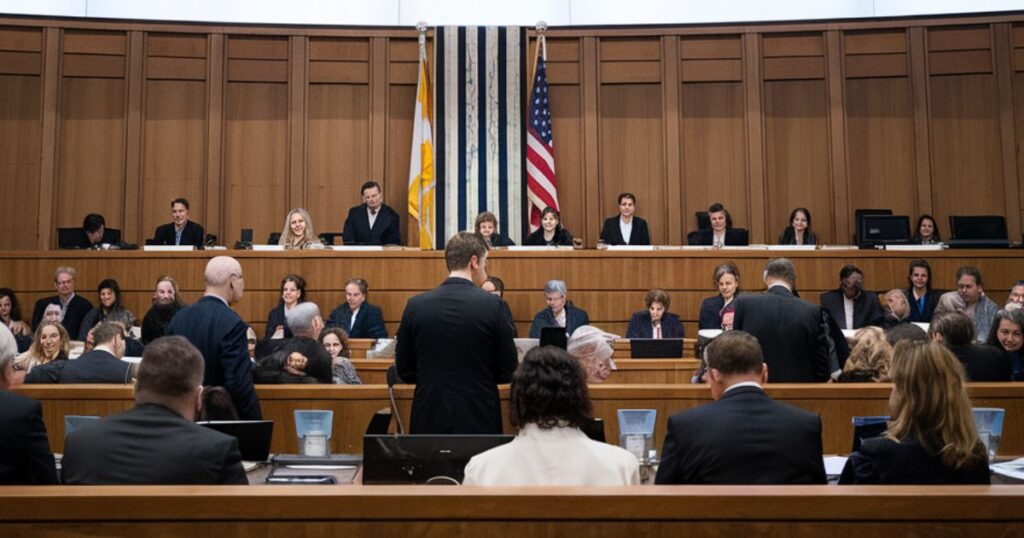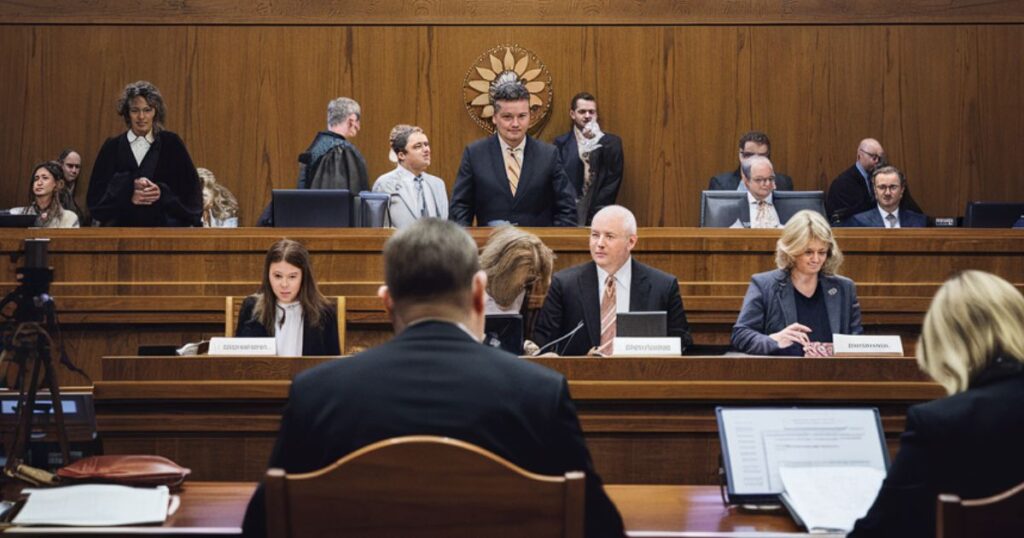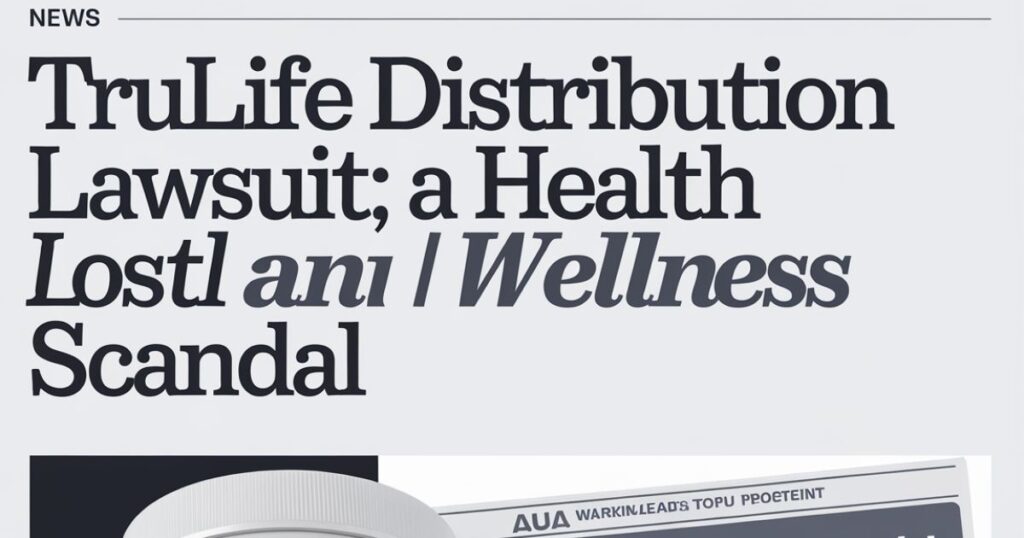When a father and son’s business rivalry erupts into a full-blown legal battle, you know there’s more to the story than meets the eye.
The Trulife Distribution lawsuit has become one of the most talked-about scandals in the health and wellness industry, pitting industry veteran Mitch Gould against his own son Brian Gould in a complex web of allegations involving fraudulent activities and deceptive trade practices.
Background of the Parties Involved
Trulife Distribution
The story begins in 2019 when Brian Gould founded Trulife Distribution with ambitious plans to revolutionize the health and wellness product distribution landscape.
Drawing from his 13-year tenure as president of Nutritional Products International (NPI), Brian brought considerable expertise to his new venture.
Under his leadership, Trulife Distribution quickly established itself as a promising player in the industry, offering comprehensive distribution solutions for health and wellness brands looking to expand their market presence.
What set Trulife apart was its claimed innovative approach to brand development and market penetration strategies.
The company positioned itself as a one-stop solution for brands seeking to navigate the complex United States distribution landscape, promising streamlined processes and guaranteed results.
Nutritional Products International (NPI)
Founded in 2008 by industry pioneer Mitch Gould, NPI had already carved out a respected position in the distribution sector. The company built its reputation on helping international and domestic brands establish a strong foothold in the American market.
With over a decade of successful operations, NPI developed an extensive network of retail connections and a proven track record of launching successful brands.
The Genesis of the Trulife Distribution Lawsuit

The brewing tension between father and son reached its boiling point in May 2022 when NPI filed a lawsuit in the U.S. District Court Florida.
The allegations were serious: false advertising, deceptive trade practices, and intentional misrepresentation of facts in commercial advertisements.
According to court documents, the situation deteriorated when potential clients began questioning the authenticity of Trulife’s marketing materials.
The lawsuit alleges that Trulife’s rapid rise in the industry wasn’t purely the result of innovation and hard work, but rather a calculated strategy of deception.
Specific Allegations within the Trulife Distribution Lawsuit
Misrepresentation of Performance
One of the most damaging allegations involves the misuse of case studies and client testimonials. The lawsuit claims that Trulife presented NPI’s success stories as their own, using these materials to convince potential clients to pay substantial setup and monthly fees.
This came to light when an attentive prospect conducted independent research and discovered the discrepancy.
Misuse of Email Address
Perhaps the most brazen allegation involves sophisticated email fraud. NPI claims Trulife created fraudulent email addresses that appeared to be legitimate NPI accounts.
This alleged scheme was designed to intercept and divert business opportunities from NPI, potentially causing significant financial damage.
Violations of Trade Acts
The legal complaint cites violations of three major statutes:
- The Florida’s Deceptive and Unfair Trade Practices Act
- The Lanham Act (Trademark Act)
- The Anticybersquatting Consumer Protection Act
Read This Post: SportsGuruPro Spin Win Daily: The Gaming Platform
The Potential Impact of the Trulife Distribution Lawsuit
The ramifications of this case extend far beyond the immediate parties involved. The lawsuit has sparked intense discussions about transparency in the distribution industry and the importance of maintaining ethical conduct in business practices.
Potential Consequences of the Lawsuit
| Impact Area | Short-term Effects | Long-term Implications |
| Business Operations | Immediate revenue impact | Restructuring requirements |
| Industry Relations | Partner uncertainty | New compliance standards |
| Market Position | Brand reputation damage | Market share adjustments |
| Client Trust | Temporary hesitation | Long-term credibility concerns |
Legal Proceedings: The Path Forward

The legal process continues to unfold with both parties presenting their cases. The discovery phase has revealed complex layers of evidence that must be carefully examined.
Legal experts suggest this case could set important precedents for how distribution companies handle marketing materials and client communications.
The Bigger Picture: Implications for the Industry
The Trulife Distribution lawsuit has sent shockwaves through the health and wellness distribution sector, forcing companies to reassess their business practices.
This case highlights the delicate balance between aggressive marketing and ethical conduct in an increasingly competitive industry.
The distribution sector has witnessed several key changes since the lawsuit:
Industry Standards Transformation: Companies are implementing stricter verification processes for marketing materials and client testimonials. The fear of similar legal challenges has led to increased documentation requirements and third-party verification systems.
Enhanced Due Diligence: Investor confidence has become more contingent on transparent business practices. Investment firms are now conducting more thorough background checks and requiring detailed documentation of marketing claims.
Consumer Protection Focus: The lawsuit has emphasized the importance of protecting end consumers from misleading claims, leading to stricter internal compliance measures across the industry.
The Road Ahead: Trulife Distribution’s Journey Post-Lawsuit

Under the leadership of CEO Michael Garcia, Trulife Distribution continues to operate from its headquarters in Newport Beach, California. The company has implemented several strategic changes to address the concerns raised in the lawsuit:
- Operational Transparency: New protocols have been established for verifying marketing materials and client testimonials.
- Corporate Governance: Enhanced oversight mechanisms have been put in place to ensure compliance with industry regulations.
- Stakeholder Communication: Regular updates are provided to partners and clients about business practices and performance metrics.
Read This Post: Sources Victor Jacobsson IPOTimes
FAQ’s
What is the result of the Trulife Distribution lawsuit?
The outcome remains confidential due to ongoing legal proceedings. However, the case has already influenced industry practices and sparked important discussions about business ethics in the distribution sector.
Is Trulife Distribution still operating?
Yes, Trulife Distribution continues its operations under CEO Michael Garcia. The company maintains its presence in the market while addressing the legal challenges it faces.
Where is Trulife Distributions headquarters?
The company operates from its main office in Newport Beach, California, serving as the central hub for its national distribution network.
Who is the CEO of Trulife Distributions?
Michael Garcia serves as the Chief Executive Officer, leading the company through its current challenges while maintaining its market position in the health and wellness industry.
Expert Insights
[Quote from Industry Expert] "This lawsuit represents a watershed moment for the distribution industry. It's forcing companies to reevaluate how they present themselves to clients and handle sensitive business information."
Moving Forward: Industry Best Practices
The Trulife Distribution lawsuit has catalyzed several important changes in industry practices:
- Documentation Requirements: Stricter protocols for verifying marketing claims and client testimonials.
- Communication Standards: Clear guidelines for business communication and email practices.
- Compliance Training: Enhanced staff training on legal requirements and ethical business practices.
Conclusion
The Trulife Distribution lawsuit serves as a cautionary tale about the importance of maintaining ethical conduct and transparency in business practices. As the legal proceedings continue, the case’s impact on the health and wellness distribution industry grows more significant.
The industry has witnessed a fundamental shift toward greater accountability and transparency. Companies now recognize that maintaining customer trust and investor confidence requires more than just impressive marketing materials – it demands genuine commitment to ethical business practices.
For those in the distribution sector, the key takeaway is clear: success built on deceptive practices is unsustainable. The future belongs to companies that can demonstrate real value while maintaining the highest standards of business integrity.

